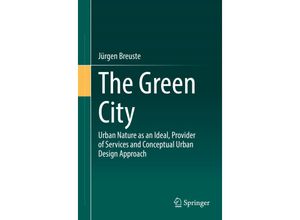This textbook on the Green City examines urban nature as an ideal provider of services and
conceptual urban design approach. It answers important contemporary questions that arise about
the ecological and cultural interactions development and structure and ecological performance
of urban nature worldwide. The book explains what urban nature is how it came to be and how
it evolved in the context of the natural and cultural conditions of its sites. It also
describes what constitutes urban biodiversity and the role of differentiated urban nature in
the Green City concept. Theories of urban development and ecology are linked to practical
applications of urban planning and illustrated with many case studies and examples. The great
potentials of urban nature are shown in detail. In order to cope with or mitigate problems in
the city a targeted urban nature management adapted to the specific conditions of the
different types of urban nature is needed which includes nature conservation as well as nature
design always keeping in mind the relation to the urban dwellers. The textbook is especially
addressed to students and teachers of urban planning ecology geography social sciences as
well as practitioners of urban design and nature conservation. This book is a translation of
the original German 1st edition Die Grüne Stadt by Jürgen Breuste published by Springer-Verlag
GmbH Germany part of Springer Nature in 2019. The translation was done with the help of
artificial intelligence (machine translation by the service DeepL.com). A subsequent human
revision was done by the author primarily in terms of content and scientific terms so that the
book will read stylistically differently from a conventional translation but without loss of
messages. Springer Nature works continuously to further the development of tools for the
production of books and on the related technologies to support the authors.

